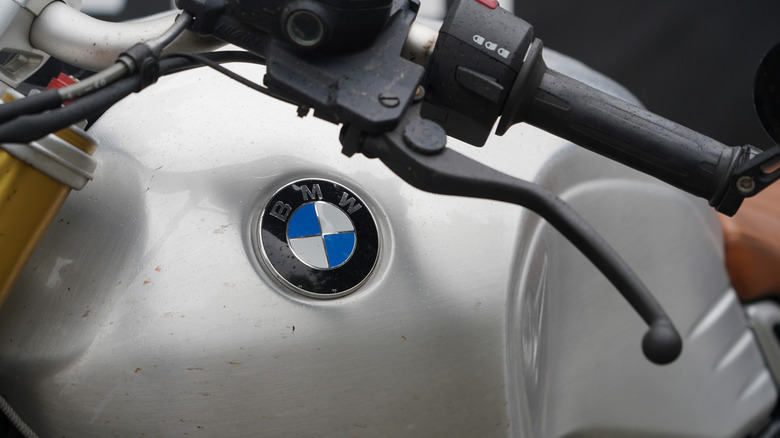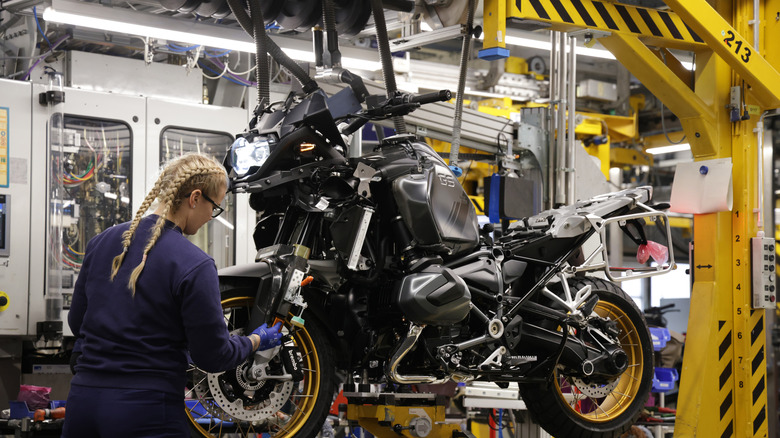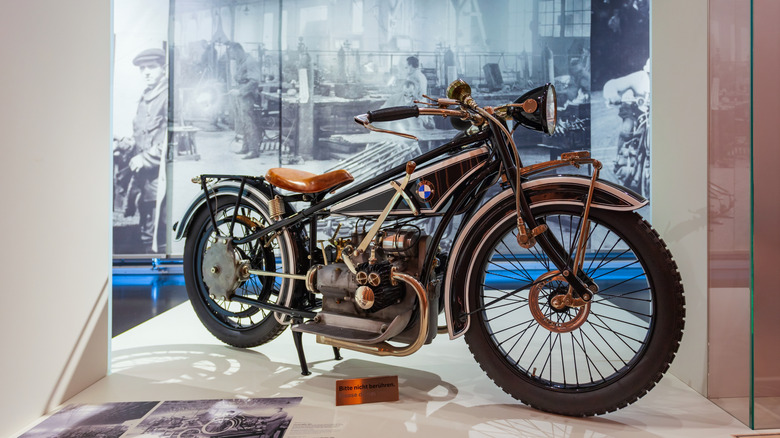Where Are BMW Motorcycle Engines Built & When Was The First One Produced?
With over a hundred years of history, BMW has produced a ton of iconic vehicles across its multiple brands, including its motorcycle arm, BMW Motorrad. For many car and motorcycle lovers, the company often showcases the best of renowned German engineering. Throughout the years, BMW has produced some pretty successful motorcycles from the pioneering BMW R12 with its hydraulic telescopic fork to the award-winning R18. But are they still truly made in Germany?
In 2020, the carmaker revealed plans of moving its manufacturing of gas engines to plants in Austria and Britain, with eight- and twelve-cylinder engines being made in Britain, to make room for EV production by 2026 (via Reuters). In 2024, the German manufacturer issued a press release stating that it would stop producing combustion engines for good in its historic Munich plant in 2027, signaling major progress in its push toward an electrified future.
According to its website, BMW confirms that the lead plant for the global production of its line of motorcycles from BMW Motorrad remains based in the district of Spandau in Berlin, and the company's main headquarters remain firmly based in Munich.
The German manufacturer, however, is far from abandoning its roots. In 2019, the BMW Group Due Diligence report [PDF] revealed that 43% of its suppliers are still based in Germany. This is followed by 34% in other European countries, plus suppliers from Asia, Africa, and the NAFTA (North American Free Trade Agreement) zone. As far as manufacturing goes, BMW also has several plants for its vehicles that span Europe, North America, South America, South Africa, India, and China.
Where else are BMW motorcycle engines built?
In 2005, the German company announced the launch of the F800 S engine, which was manufactured by Bombardier-Rotax GmbH in its Austrian plant before being sent to Germany for its final assembly (via a BMW Group press release). Known for its off-road prowess, the BMW F800GS, which our team thinks is one of the best BMW motorcycles ever made, uses this engine instead of the legacy boxer twin option. After some time, BMW shifted its engine manufacturing for the G650X Challenge, Moto, and Country from Europe to Loncin in China (via Autoevolution).
A few years later, Taiwan-based Kwang Yang Motor Co, Ltd (KYMCO) was also tasked to manufacture the 450cc engine for the enduro sport-focused BMW G450X. In 2007, BMW announced the launch of the G450X, but it didn't last long in the market and was officially discontinued in 2011. Because of its short production, it has become one of the rarest dirt bikes in existence.
In recent times, the 2016 BMW G 310 R engine was also noted to be made in Asia. In partnership with TVS Motor Company, an Indian motorcycle manufacturer, the 2016 BMW G 310 R engine was produced in Bangalore, India. According to Cycle World, BMW's first under-500cc roadster required a fresh new single-cylinder engine held to the same standards as the products from its Berlin manufacturing facilities. To maintain the BMW standard, TVS worked with the company to combine German machinery, quality testing practices, and staff training procedures for its assembly line.
When was the first BMW motorcycle produced?
Even when some of its engines are no longer made by German hands, BMW prides itself in being able to stay true to its promise of quality craftsmanship. Since its founding in 1916, the German company has produced everything from cars to aircraft and even collaborated with companies that make household appliances. In 1923, it revealed its first motorcycle, the BMW R32, during the Berlin Motor Show.
Even today, BMW shares that many of its motorcycles have kept some features from its original design, the Boxer engine. Apart from the R32, the now-iconic flat-twin Boxer engine (or the M2B15) was originally produced in 1919 for use in Victoria Werke AG motorcycles and Bayerische Flugzeugwerke's Helios motorcycles. Heavily inspired by aircraft engines, Max Friz designed the state-of-the-art engine with its novel recirculating oil system that could go nearly 60 mph under the right conditions.
Even in its early days, the demand for the BMW R32 was pretty substantial both locally and internationally, including partnerships with a local government fire department in Bavaria and exporting units to Japan. Just three years later, the automaker released the R37, which was a significantly more powerful version of the R32 that was built for the tracks. Since then, the German manufacturer has made several cool motorcycles that had other pioneering features, like the BMW K1, which was the first bike that had an anti-lock braking system (ABS), and triggered improvements in everything from safety to all-weather performance and durability.


